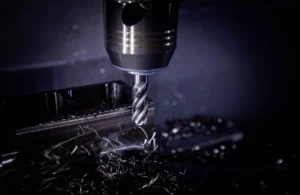When it comes to machining aluminum, choosing the right roughing end mill is essential for achieving efficient and precise results. Now, we will explore the key factors to consider when selecting the best aluminum roughing end mill.
1. Rigorous Selection Criteria:
To ensure efficient machining, the selection process for an aluminum roughing end mill should be based on several important criteria. Firstly, consider the cutter material. For machining aluminum, high-speed steel (HSS) end mills or carbide end mills are typically the most suitable options due to their excellent heat resistance and durability.
Secondly, pay attention to the flute design. A roughing end mill with multiple flutes (usually 3 or more) is recommended for aluminum, as it allows for greater material removal rates, minimizing tool wear and prolonging tool life. Additionally, a chipbreaker design on the flute can effectively manage chip flow, preventing chip buildup and improving efficiency.
Furthermore, consider the coating of the end mill. PVD coatings, such as TiAlN or TiCN, provide enhanced wear resistance and anti-adhesion properties, minimizing friction and heat generation during the cutting process, thereby improving tool life and surface quality.
2. Application Areas and Benefits:
a) Aerospace Industry:
In the aerospace industry, where aluminum components are frequently utilized, the choice of an aluminum roughing end mill is critical for meeting the stringent requirements of precision and efficiency. By selecting a high-quality roughing end mill, manufacturers can achieve faster material removal rates, ensuring timely delivery without compromising on quality. The end mill’s optimized chip evacuation properties facilitate continuous machining, reducing downtime and enhancing overall productivity.
b) Automotive Sector:
In the automotive sector, machining aluminum components demands exceptional performance and productivity. With the right roughing end mill, manufacturers can easily remove excess material while maintaining dimensional accuracy. The efficient chip evacuation mechanism built into the end mill design prevents chip clogging, resulting in smooth and consistent cutting, reducing the need for frequent tool changes. This, in turn, increases throughput and reduces production costs for automotive manufacturers.
c) General Manufacturing:
In general manufacturing applications, machining aluminum is common, especially in the fabrication of consumer electronics, furniture, and various other aluminum-based products. By utilizing an aluminum roughing end mill suited for such applications, manufacturers can elevate their efficiency by achieving optimum material removal rates, reducing cycle times, and improving surface finish. This enables them to meet market demands promptly and deliver high-quality products consistently.
3. Thought-Provoking Considerations:
Choosing the best aluminum roughing end mill goes beyond technical specifications. While adequate tool selection is crucial, it is equally important to optimize cutting parameters such as cutting speed, feed rate, and depth of cut. Manufacturers must focus on finding the perfect balance between these parameters to maximize efficiency and ensure longer tool life.
Furthermore, it is essential to consider the workpiece’s specific characteristics, such as hardness and geometry. This ensures that the chosen roughing end mill is tailored precisely to the demands of the machining operation, contributing significantly to overall productivity and machining performance.
Selecting the best aluminum roughing end mill is crucial for achieving optimal efficiency and precision in machining aluminum components. By considering factors such as cutter material, flute design, and coating, manufacturers can enhance chip evacuation, minimize tool wear, and improve surface finish. Industries like aerospace, automotive, and general manufacturing can significantly benefit from the right roughing end mill, enabling them to meet demanding requirements while optimizing production processes.
